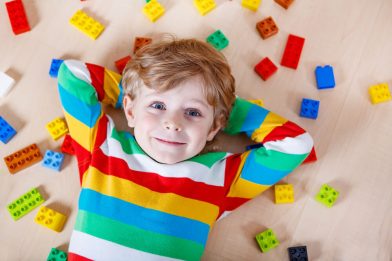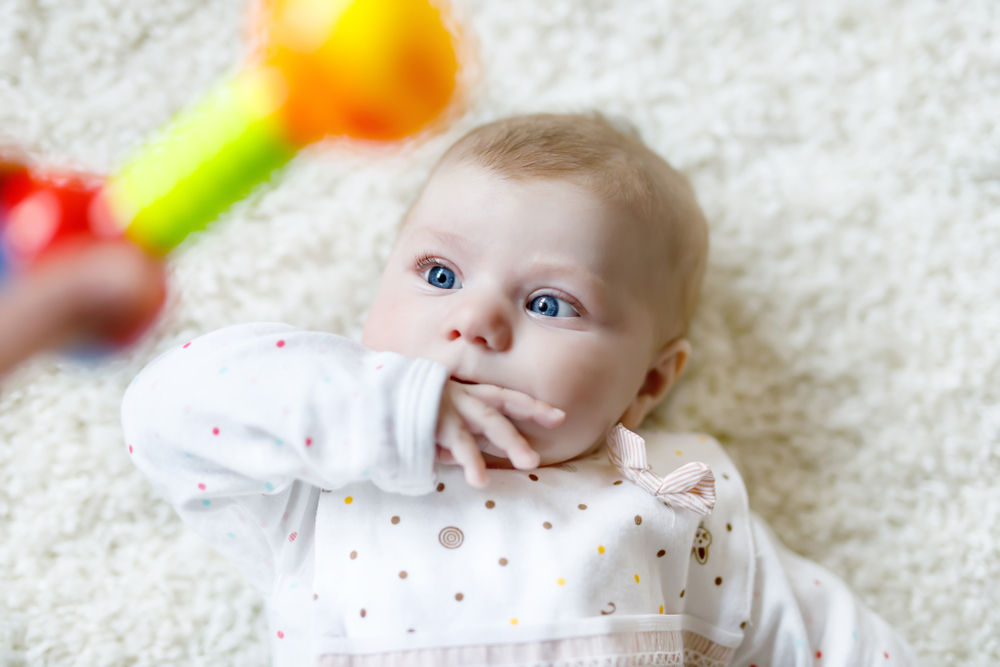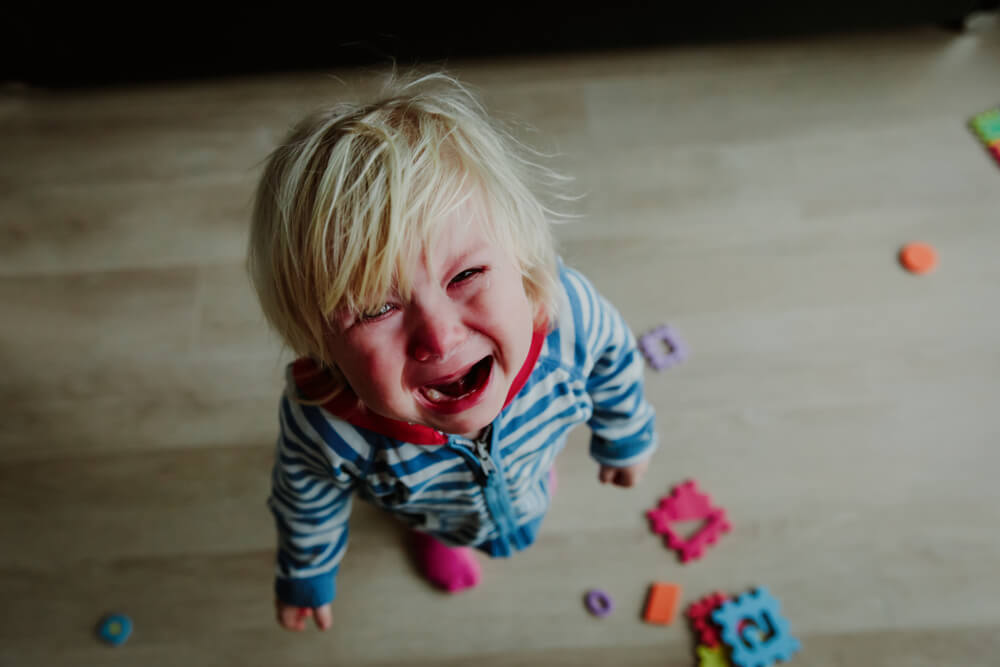What can a healthy child do in a year? Complete Guide to Child Development

The development of a child in 1 year is a process that has rapid dynamics, therefore it requires attention. In those 12 months, the child makes a truly big journey: from being a helpless baby to becoming an agile and inquisitive toddler on the path to developing life skills.
In this article we will examine the most important aspects of the physical and personal development of one-year-old children, the common problems related to these processes and how to solve them, as well as the signs that the child is lagging behind in development.
Contents:
- Physical development: How a child changes in the first year of life
- Classification of the degree of delay in a child’s physical development
- What should a child be able to do in 1 year?
- Daily routine and sleep of a one-year-old child
- Nutrition of a one-year-old child
- Care of one-year-old child
- One-year-old children’s behavior problems and ways to solve them
- How can I support the development of children? Practical tips
Physical development: How a child changes in the first year of life
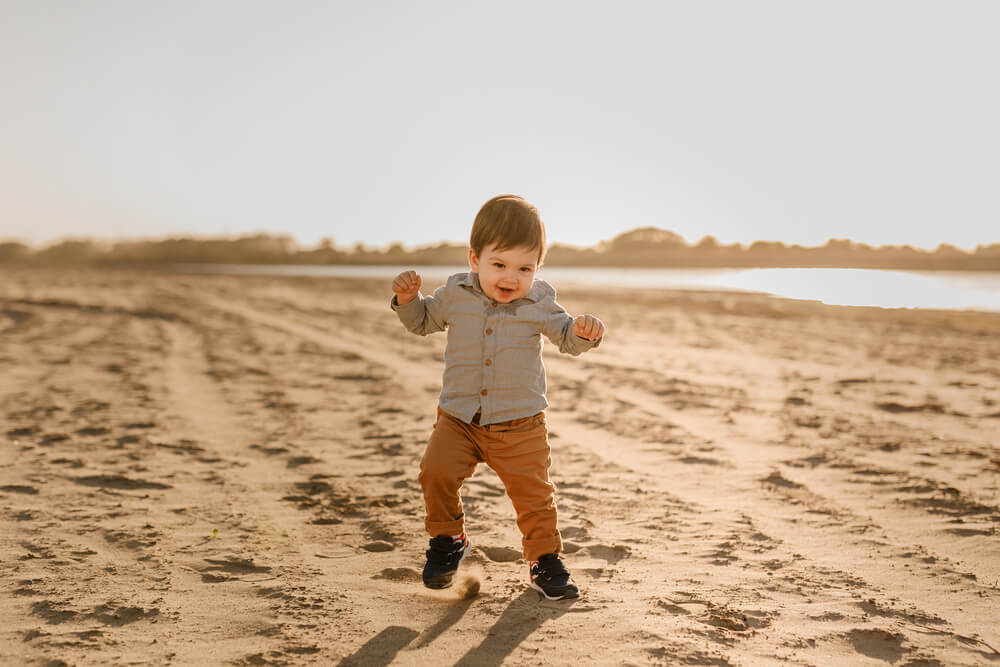
Prostock-studio/Shutterstock.com
As the baby gets older, the rate of weight gain and growth slows down. In general, the weight of a child per year is three times higher than that at birth, and growth increases to 75 cm on average.
The physical development of the child and the parameters that it has in 12 months are largely associated with the course of pregnancy, the psychological state of the woman and her health, the course of childbirth. That means everything is individual.
Normal physical development of a child per year. Pediatric parameters in the table
| Parameters | Boys | Girls |
| Weight, kg | 8,9 – 12,3 | 8,5 – 10,8 |
| Height, cm | 72,3 – 79,7 | 71,4 – 78,5 |
| Chest, cm | 46 – 51,4 | 45,5 – 50,2 |
| Head circumference, cm | 43,9 – 48,6 | 44,2 – 47,3 |
⠀
Even by the end of the first year of life, the child should have 8 teeth, but do not worry if by this time their number is different. Everything is individual here: sometimes the first tooth appears only closer to a year.
One has to worry if no teeth have appeared at all within 52 weeks after the birth of the child, or if the order of their teething is disturbed or the teeth appear diseased.
Differences between boys and girls

Prostock-studio/Shutterstock.com
Around primary school age, there are no significant differences between height and weight in boys and girls, although some children are taller and vice versa. However, if the intensity of physical development is practically independent of sexuality, then the situation with the order and speed of maturation of mental functions is different.
Usually the boys start talking later. Scientists and doctors link this to the fact that they mature more slowly in the left hemisphere of the brain, which contains the centers responsible for articulation and language comprehension.
Boys are less able than girls to recognize shades of emotions, they react less to loud noises and to melodic sounds. Girls are already able to recognize the faces of familiar people in photos by 4 months, in boys of this age it almost does not happen.
Physical abilities of one-year-old children: small and large motor skills
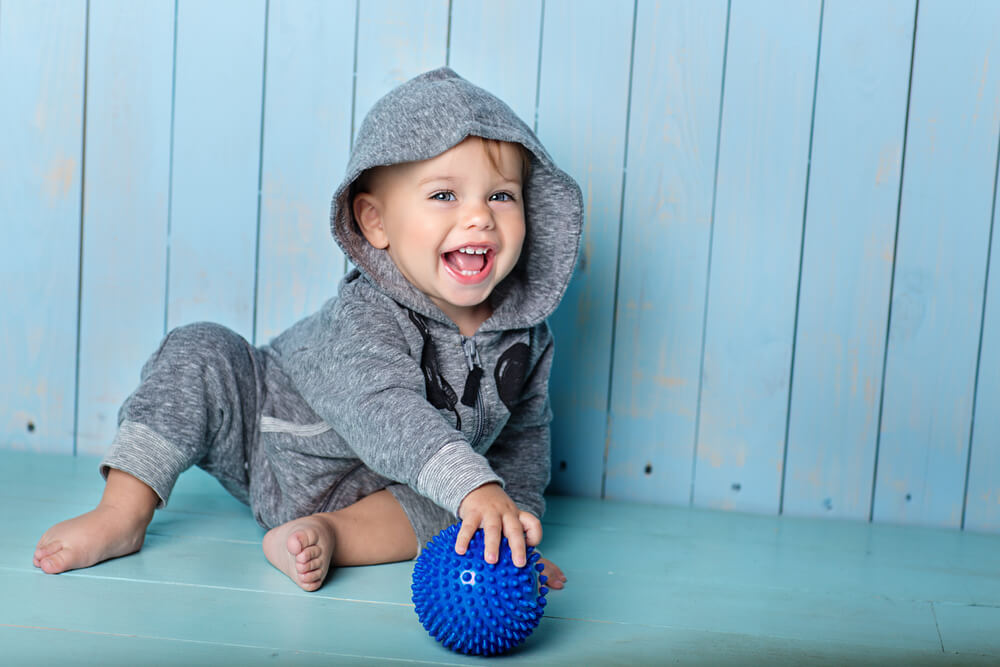
Prostock-studio/Shutterstock.com
According to the WHO standards for child motor development, a child must go through six key steps by the age of 12 months.
| Motor skill | Development time |
| Sitting without support | from 4 to 9 months |
| Stand with support | from 5.5 to 11 months |
| Crawling | from 5.3 to 13 months |
| Walking with support | from 6 to 13 months |
| Independent standing | from 7 to 17 months |
| A sure-fire success | from 8 to 18 months |
⠀
Also in pediatrics there is a calendar of a child’s psychomotor development in the form of pivot tables correlating age and ability. But they are not a standard either, they just give a general idea of the norm. All kids are individual, so small deviations in certain parameters are completely normal.
Most often, children begin to learn to walk between the ages of 6 months and a year. The child takes the first steps to the side, moves along the support, and only then the ability to move forward develops, already with the support of an adult. Many doctors agree that at this stage it is not necessary to artificially stimulate the child to develop the ability to walk with the help of walkers and other similar devices.
If the child is crawling, does not get up quickly, his muscles have not yet reached the right physical level, they are not strong enough to walk. Give your body the time it needs to prepare to master a new skill.
Another important aspect of young children’s physical development is fine motor skills.
A one-year-old child can develop harmoniously:
- reach objects;
- move objects from one hand to another;
- take several small items with you at once;
- take objects with five fingers (movement with a rake);
- take objects with your thumb and forefinger (movement with tweezers);
- build towers from several cubes;
- put rings on the pyramid;
- shake rattle;
- cling to a toy if someone wants to pick it up.
Since the main methods of cognition in one-year-old children are sensory, the tactile sensations develop their memory. This means that it is important and necessary to “pump” fine motor skills. It stimulates the child’s brain activity and intellectual development.
Interestingly, it is not until the age of 4 that the child is determined to be right-handed or left-handed, and up to this age hand preference may be unstable.
According to the well-known pediatrician, candidate of medical sciences Evgeny Komarovsky, the main task of parents is to do everything possible so that the child grows and develops normally, giving him systematic examinations at the doctor’s office that will help identify the child’s deviation of the development norms to notice in time.
Doctors particularly emphasize that you shouldn’t compare your child with other children and listen to the opinions of others. This only worsens the mental state of the parents, and the child has to experience additional stress due to additional examinations and examinations by specialists.
How to understand that a child is lagging behind in his physical development?

Prostock-studio/Shutterstock.com
The delay in physical development is a significant delay in the child according to anthropometric criteria from his peers, often accompanied by poor development of motor skills and cognitive abilities. May be associated with the disease (organic) and with psychological and social factors.
Although well-known pediatricians recommend leaving the definition of delays for the proportion of doctors, a parent still knows their child better and can spot something going wrong sooner than the doctor will notice at a routine check-up.
Signs of a delay in physical development in a one-year-old child:
- eats poorly for no apparent reason;
- falls often, walks unsteadily;
- does not maintain balance when sitting, standing, or walking;
- can’t grab small things and toys which I used to hold with no difficulty;
- unable to keep track of a moving object;
- At 1.5 years he does not walk alone.
Classification of the degree of delay in a child’s physical development
| Severity | Weight (% of norm) | Height (% of norm) |
| Lightweight | 75–90 | 90–95 |
| Average | 60–74 | 85–89 |
| Strongly | Under 60 | Under 85 |
⠀
A slight delay in physical development is successfully treatable and leads to the normalization of the child’s condition. With a moderate to severe delay, children lose the subcutaneous fat layer, muscle mass, they have dermatitis, hair falls out, recurrent infections develop, etc. All this leads to irreversible consequences that will affect all life.
What should a child be able to do in 1 year?
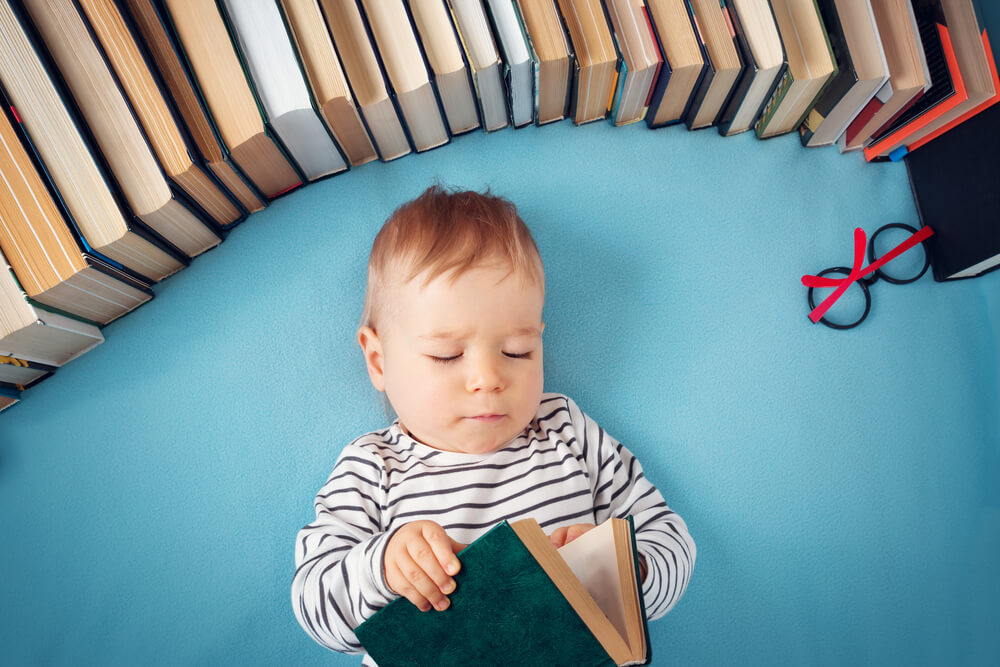
Prostock-studio/Shutterstock.com
In the first year of life, people not only develop intensively physically. Sensory, linguistic, social-communicative and self-service skills develop.
For example, a child of one year gets acquainted with the voices of parents, pays attention to small objects at a distance of 20-40 cm, distinguishes between favorite toys, among other things, and skillfully manages with them. He smiles, is happy, can sing along and dance to the beat of the music.
Let’s consider the most important aspects of child development by year.
Language and communication

Prostock-studio/Shutterstock.com
Early language skills include saying short, simple words and making uncomplicated sounds to attract attention and get what you want.
Language skills of a child at 12 months:
- finds out his name;
- scrolls or pronounces the same syllables;
- uses sounds and words meaningfully and relates them to specific objects/people.
As a rule, one-year-old children know and understand more than 20 words. If a child doesn’t pronounce more than 8-10 words, but tries to repeat new words to their parents, that’s also the norm. Pediatricians advise to monitor the child’s speech in development. If there is a replenishment in his vocabulary in six months, then everything will be fine.
You also have to consider the heredity factor: if one of the parents speaks too late, there is a chance that their child will also start speaking later and then catch up with their peers.
It is worth worrying if the child does not pronounce syllables between the ages of six and eleven months of life, and by the age of one year utters fewer than three simple words. These are signs of delayed speech development – you need to see a doctor.
Communication skills in a one-year-old child are the ability to express your emotions, correctly perceive the information received and use it to connect, and literally get in touch with other people.
Baby in 12 months:
- smile;
- rejoices in the arrival of relatives;
- meets the loved ones in the photo;
- imitates the facial expressions of the parents;
- cries at the sight of strangers;
- expresses dissatisfaction;
- responding to requests to bring, carry, open or close;
- can react to the treatment with gestures or facial expressions;
- understands and knows the difference between «possible» and «impossible».
The disruption of the child’s communication skills is evidenced by his limited interests – he only plays with one toy, repeating the same actions – for example, shakes doors, shakes out sand / grain. He seems immersed in his world, and attempts to diversify his activities cause a fit of aggression or tantrums.
Another wake-up call is problems with non-verbal communication skills. The child cannot make visual contact, does not understand how to communicate with other people, even if he can speak. All of this points to a possible autistic spectrum disorder.
Independence and self-service skills

Prostock-studio/Shutterstock.com
The independence of a one-year-old child is just beginning to emerge and actively develop, and improving large and fine motor skills and communication skills contributes to this.
Children discover new possibilities in their bodies and begin to take initiative, show more stamina and try to emulate adults.
A one-year-old can:
- blow on hot;
- drink from a glass and hold it with both hands;
- drink from a spoon;
- holding and biting small pieces of biscuits or bread;
- wipe with a towel;
- ask to go to the toilet;
- remove unbuttoned shoes;
- dress yourself by moving your hands and head.
Daily routine and sleep of a one-year-old child

Prostock-studio/Shutterstock.com
For children who are actively mastering new skills, sleep and wakefulness is very important, because they need a long quality vacation.
During the day, one-year-old children need about 13.5 hours of sleep, including 11-11.5 at night and twice a day for 1-1.5 hours. Waking between dreams should be about 3-4 hours, otherwise the child may overdo it or overdo it, which will negatively affect the evening lying.
Why else can a one-year-old have trouble sleeping at night:
- he has no clear daily routine;
- going to bed later than usual;
- he slept too late during the day;
- he feels unwell;
- He is not trained to self-sleep.
It is obvious that most problems with falling asleep are due to the lack of a daytime regime or its disruptions. A child needs a routine – activities repeated by the hour every day that will help them develop a sense of stability. At the same time, the routine helps parents to plan their time better and, if possible, integrate personal interests into a difficult life with the baby.
You can often find tips on building an early regime in kids, with rises at 7am and bedtime at 9pm. Many consider it ideal. However, pediatrician Komarowski authoritatively explains: There is no “right” time to lay a child. Correlate any advice with your family and adjust your sleep and wake modes to suit you.
The routine includes not only the daily routine, but also the so-called “sleepy rituals” and “waking up rituals”. They are needed to show the child when the day has come and when it is over.
For example, if you’re still on GW, it’s entirely possible to start the day by applying it to your chest. A “waking-up ritual” can be opening curtains together, a kind of morning greeting – words, kisses, hugs.
Organize the routine of a one-year-old, devote the first half of the day to studying something new, as a rested brain absorbs information better. The second half of the day can be devoted to active group games and a walk.
Two hours before bedtime, switch to quiet games, reading books, and looking at pictures. Eliminate physical activity and watching cartoons.
Follow up with «sleepy rituals» shortly before you go to sleep. Think about what can relax a baby: a bath before bed, petting, a lullaby, a switch of attention, emotional support? Try to look for options, but at the same time try to teach children to fall asleep without your motion sickness and divide food and sleep so as not to form a habit of calming down with food (which becomes a habit in adulthood, allocate stress meal).
Before daydreams, you can use a condensed version of the «sleepy» rituals in the evening to relax the child.
Nutrition of a one-year-old child
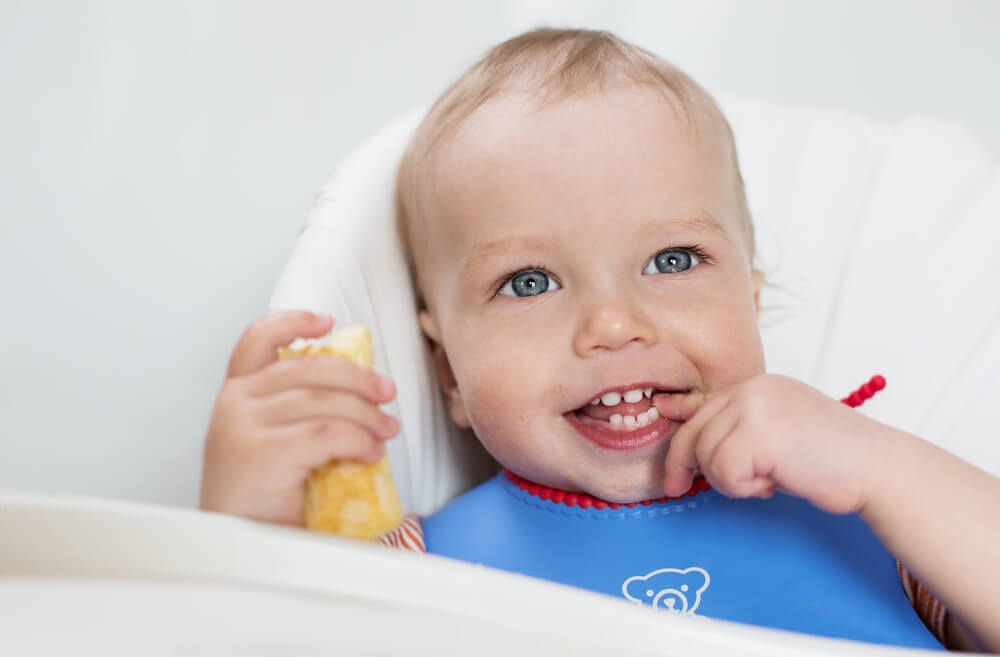
Prostock-studio/Shutterstock.com
In a year, children appear in a transitional period in nutrition, because they have teeth and develop chewing skills, and the gastrointestinal tract already allows for the digestion and absorption of more complex foods. In addition, taste preferences are also gradually expanding.
Up to a year and a half you can have 5 meals, but if you notice that the child refuses from the last meal, you should try to remove it, leaving only breakfast, lunch, afternoon tea and dinner. This is a necessary minimum. You have to feed the baby by the hour (remember the routine?), and if the plans include a visit to kindergarten, it’s better to “fit” the schedule under him.
The daily diet should be 1100-1200 ml of a puree consistency meal.
For breakfast and dinner there should be about 1/4 of the total daily norm, for lunch 1/3, the rest for afternoon tea.
The approximate amount of food a child can consume per day:
- breast milk / mixture and kefir – 500-600 g;
- greens – 200-350 gr;
- fruits – 200 g;
- porridge – 200 g;
- meat – 75 g;
- cottage cheese – 50 g;
- eggs – 40-50 g;
- bread – 40 g;
- fish – 30 g;
- sugar / fructose – no more than 40 g.
These are the basic foods for feeding a one-year-old child, the combinations of which make up all baby food. It must be borne in mind that children are often allergic to eggs and fish, causing gas and diarrhea from legumes.
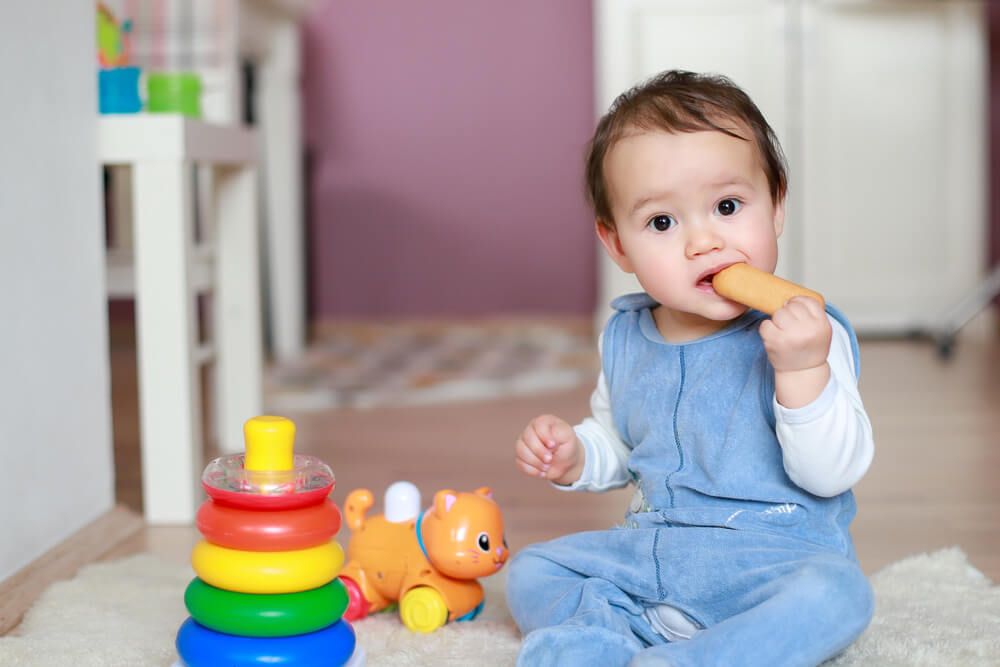
Prostock-studio/Shutterstock.com
For porridge it is better to choose buckwheat and oatmeal, these cereals are rich in carbohydrates, vitamins and minerals. Once every few days, you can cook rice porridge – it will help improve digestion, but it will not be rich in vitamins.
Industrial sweets – cakes, cakes, candies, caramel, chocolate – cannot be given to children. Give preference to natural treats – lozenges, jam.
Since the child is also a person and sooner or later he gets bored of eating the same thing, you can add 5-10 g of cheese, sour cream, sunflower or other vegetable oil to the menu. Salt – no more than 3 g per day.
Healthy children no longer need night feedings per year, so sleep and food must be separated. Any food or drink, other than water and breast milk, consumed at night is harmful to teeth, overloads digestion and affects appetite during the day.
You can give relaxation and return night feedings if the child feels bad or is actively mastering a new skill, but when the acute period is over, night meals will have to be excluded again.
It is also advisable to stop breastfeeding only in the morning and before bedtime.
It is necessary to suggest the child to drink between feedings – use boiled water or a weak tea for this. Let the child have access to their bottle or drinking cup. To quench thirst, do not use juices and compotes, they are sweet and will not cope with the task. Leave them for meals.
Care of one-year-old child

Prostock-studio/Shutterstock.com
It is believed that 12 months is the optimal time to accustom children to hygiene procedures, as they begin to develop skills for independent behavior and habits. Daily hygiene measures should be part of the child’s routine.
- In the morning, after the last awakening, wipe the child’s face with a damp cotton pad (for rashes, boiled water will be suitable, as well as an infusion of chamomile grasses or alternately).
- Brush the children’s teeth with a simple gauze cloth or a special silicone brush that is placed on the finger.
- Check nose, eyes and ears and gently remove mucus, crusts and sulfur.
- After sleeping, wash the baby and arrange an air bath for 10-15 minutes to allow the skin to recover from the diaper.
It is advisable to take such breaks when wearing a diaper several times a day and give the skin a breath – this is an excellent prevention of diaper rash. If it is present, as well as if there are sweat lines or rashes on the baby’s skin, you can treat it with baby lotion with a cotton ball or use baby cream.
Diapers in children older than six months must be changed when filling. After each emptying of the bowels, the child should be washed with front-back movements from the perineum to the buttocks. If you notice that a child tries to take off his diaper during the day, you can try to introduce him to the pot. Some one-year-old children are already able to master it.
In the evening, the whole algorithm repeats itself, with the difference that immediately before bedtime the child needs to brush his teeth or at least drink boiled water. During the day, after each meal, the child is also recommended to drink some water to clean the oral cavity from the remains of food.
You can bathe a one-year-old child every other day, the bath time is 10-20 minutes, followed by an air bath.
All of the child’s personal hygiene products – towel, soap, washcloth, etc. – must be individual and appropriate for their age.
Trim your nails once a week.
One-year-old children’s behavior problems and ways to solve them
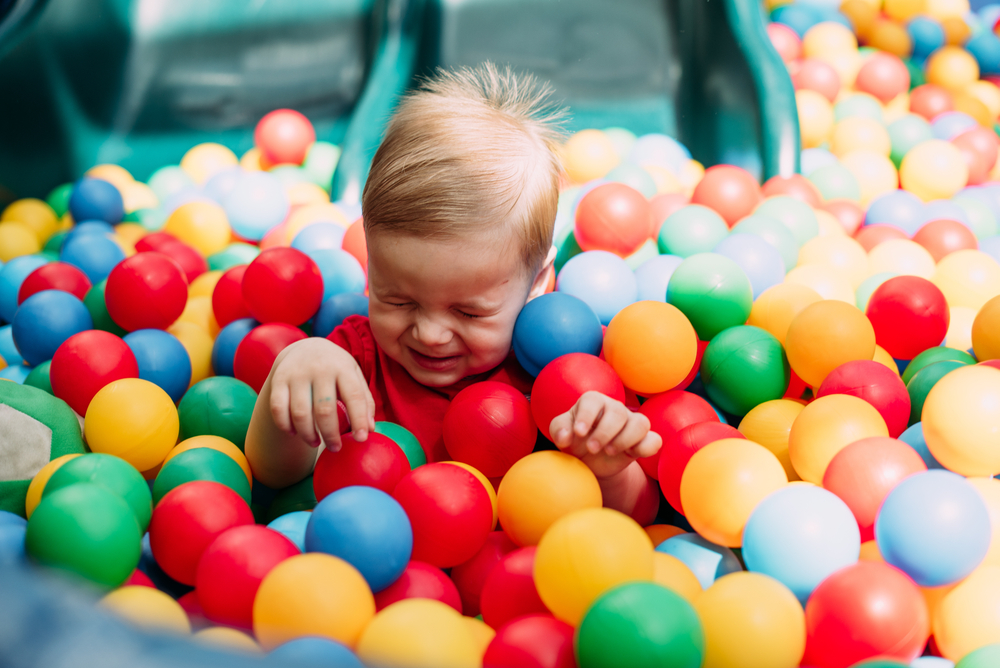
Prostock-studio/Shutterstock.com
Child tantrums are a topic that serious scientists devote scientific articles to. Their real causes most often lie in a combination of the child’s personal characteristics, immediate circumstances, and behavioral development processes.
It’s tantrums that are more common in children as young as 2 years old, but 12 months is the boundary between infancy and early childhood when worldview changes. The child begins to recognize itself as a person, it forms its own will. This is a difficult test for the children’s psyche, because the child does not yet understand the reasons for the prohibitions when it recognizes its “I want” and the difference between “can” and “impossible”.
In the year comes the first age crisis, and the stubbornness of the children is also noticeable.
Stubbornness
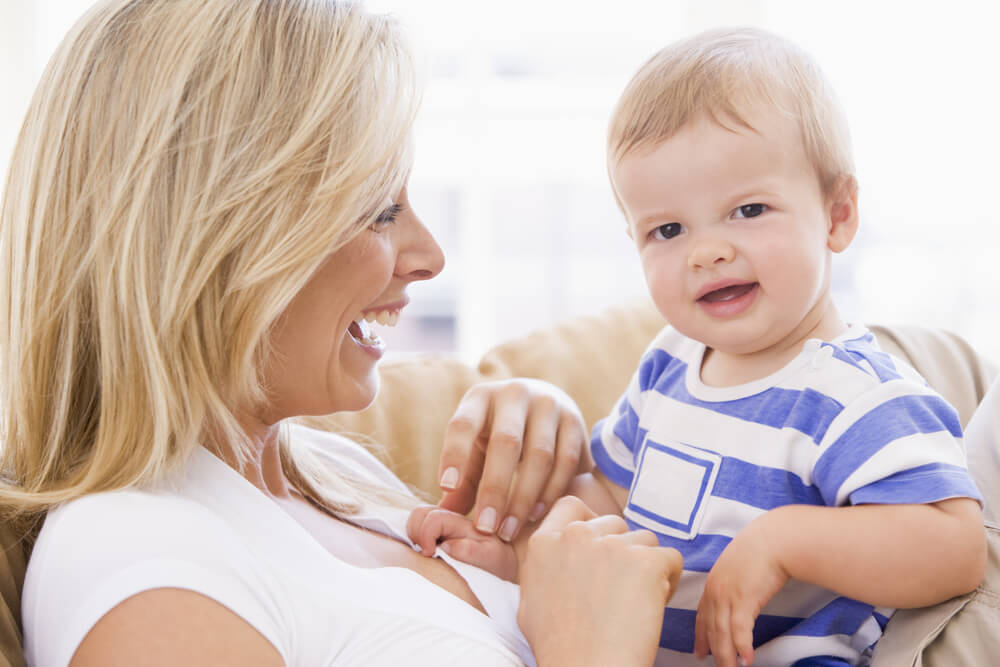
Prostock-studio/Shutterstock.com
Stubbornness of kids is an important and problematic issue because many adults see it in the child’s eyes as a challenge to their authority, even if they are only one year old, and try to eradicate this behavior without knowing its causes.
It is important to distinguish between perseverance and stubbornness. Endurance is a child’s desire to get something. Stubbornness is a child’s reaction to achieving something not because he wants to, but because he demands that his opinion be considered.
The first manifestations of stubbornness are an integral factor in a child’s emotional development. You are only one year old. During this period, the child shows moody stubbornness whenever prevented from crawling, walking, touching things that are interesting without offering anything in return. Stubbornness can also appear as a protest against unpleasant or unexpected adult actions.
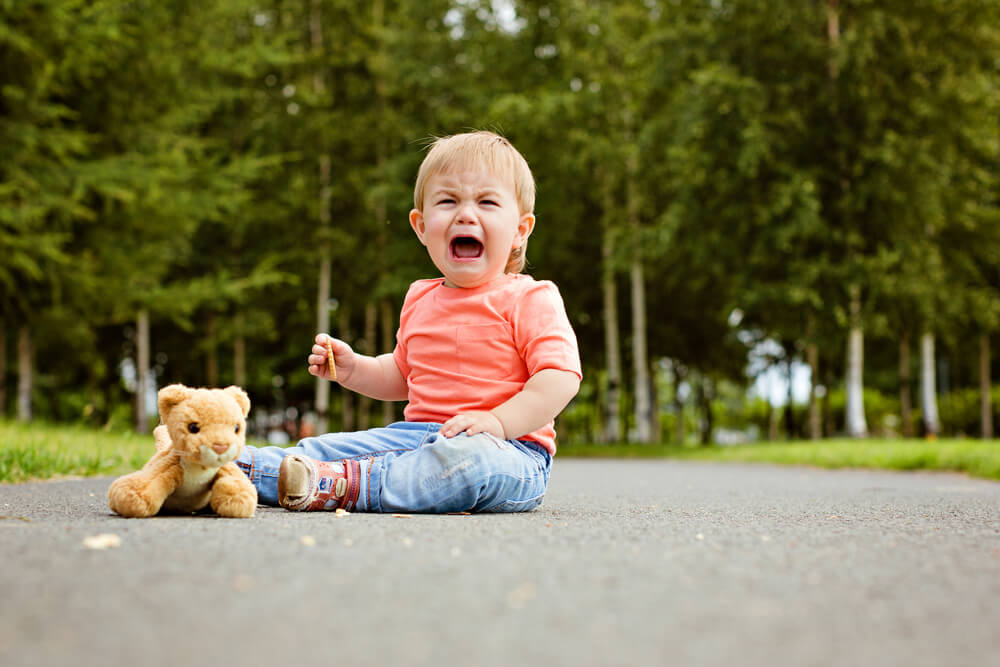
Prostock-studio/Shutterstock.com
During a bout of stubbornness, children produce large amounts of adrenaline, a hormone that causes stress. The child can scream, swing his arms, and fall to the ground.
It is important to immediately develop a correct behavioral strategy so that the child does not develop stubbornness, which turns into a pathological state and brings with it many problems at school, and especially in adolescence.
Do not pressurize the child with prohibitions and do not overload him with the demands of his not yet strong left hemisphere, in which only the centers responsible for language and consciousness mature. Because of this, children stop responding adequately to the desires of adults, begin to perceive the opposite, become capricious and refuse everything.
A small child needs a game, the ability to express emotions, including negative ones. Don’t repress them, don’t limit the child’s cognitive interest. You are an adult and you can organize the process of knowing the world for sure.
Related: Helping Your Autistic Child: A Guide for Parents.
How can I support the development of children? Practical tips
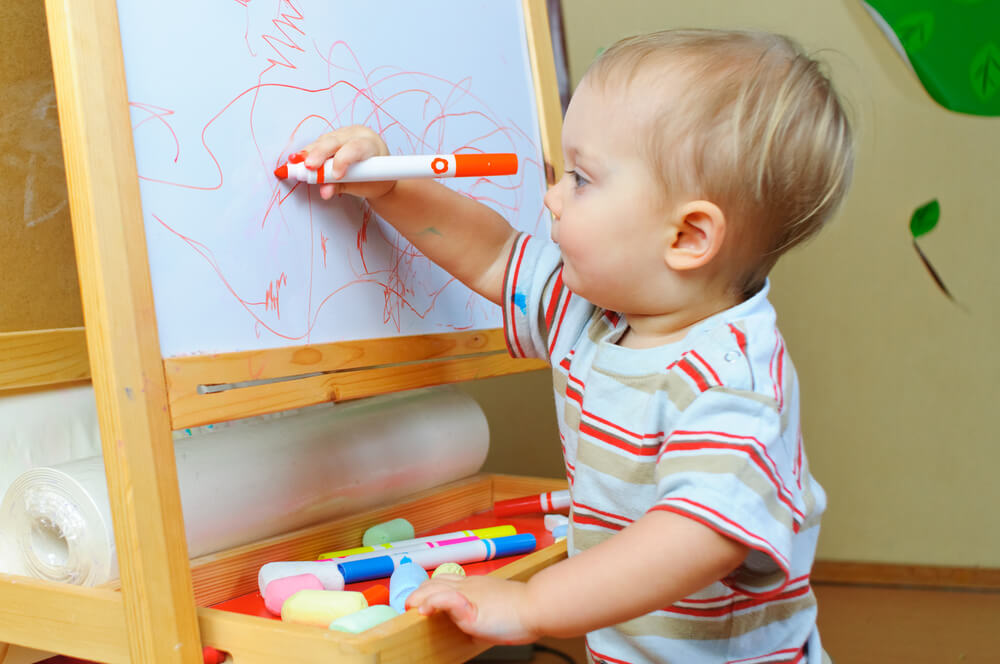
Prostock-studio/Shutterstock.com
All parents want the child to grow up healthy and develop according to their age. Of course, there is also a desire to encourage the development of new skills in children. What conditions will contribute to the development of the baby and how to ensure them?
Here is what the World Health Organization recommends:
- A one-year-old child should engage in at least 180 minutes a day of varied physical activity of any intensity.
- The mobility of an awake child should not be restricted for more than one hour at a time, it should not sit in strollers, child seats, carrier bags and ergo backpacks for long periods of time. During these periods, the child needs to ensure communication with an adult, for example, read a fairy tale, listen to a compound speech.
- One-year-olds are not encouraged to watch cartoons, spend time on TV, or spend time on gadgets.
- A 12 month old child should have a sleep and wake schedule while needing to sleep at least 11 hours a day.
How to develop large and fine motor skills in a child?
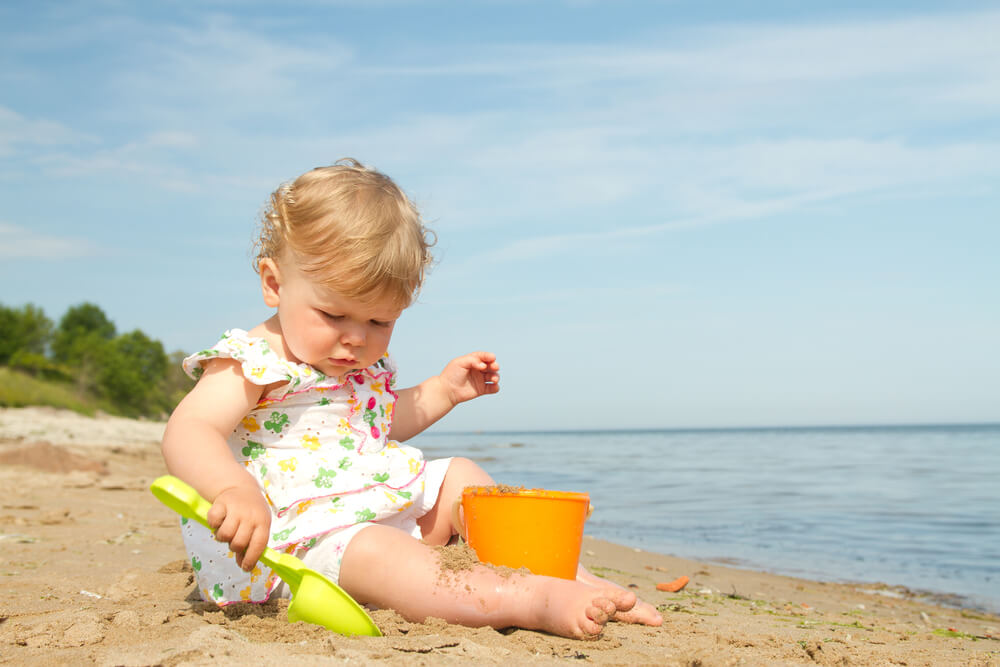
Prostock-studio/Shutterstock.com
Do modeling and drawing. These exercises also contribute to the development of color perception and imagination of the child.
Play with sand. It stimulates creative imagination, perception of shapes and colors. Collective playing in the sandbox with other children improves communication skills.
How far the motor skills of children’s hands and feet are developed also depends on the child’s language, since the most important method of cognition at this age is sensory. So let your child play more with a variety of things — from balls to water.
How to develop a child’s language?
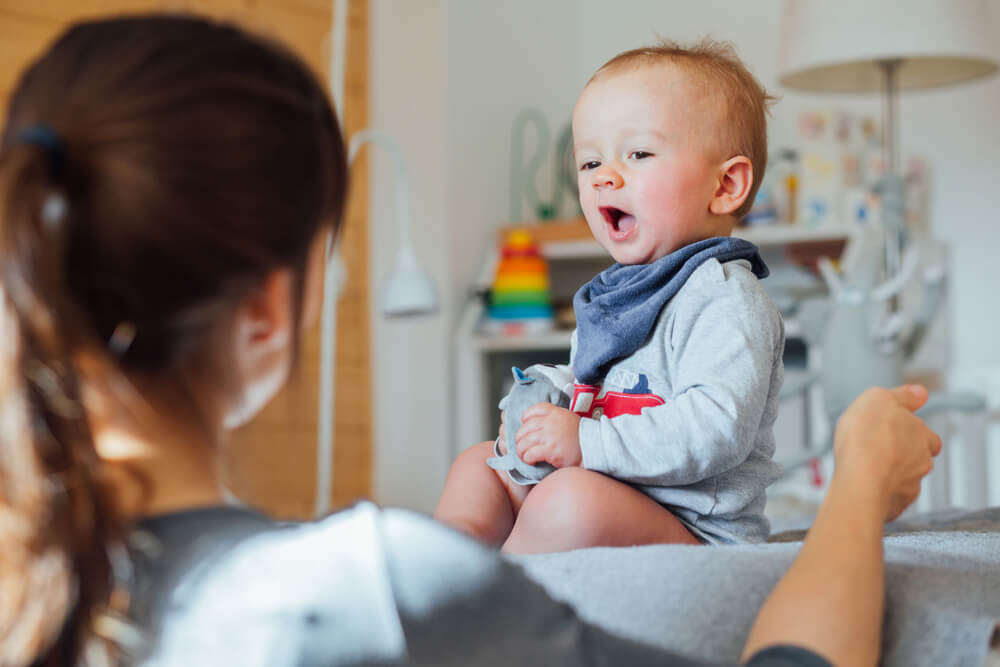
Prostock-studio/Shutterstock.com
Talk to the children as much as possible. In the year they can already be acquainted with the names of clothes, household items, toys or animals.
Read every day. This affects not only speech — books with bright images and volumetric elements stimulate the development of spatial thinking and imagination.
Play story games. Regular communication in this form will be very helpful.
Communicating with other children has a good effect on the development of language skills.
How to boost a child’s immunity?
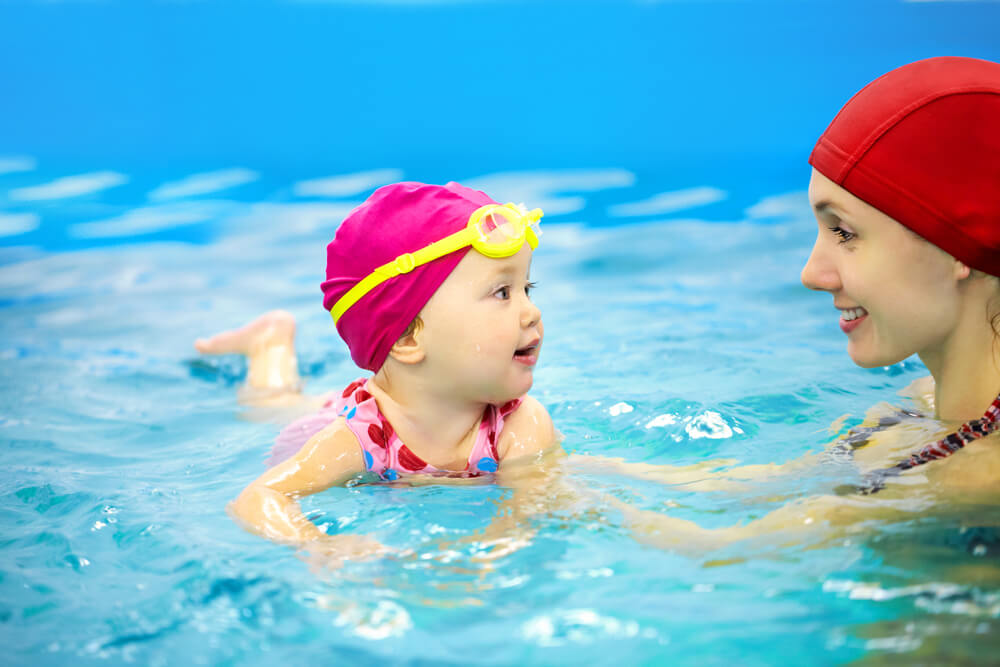
Prostock-studio/Shutterstock.com
Do swimming. Exercises in the water help to strengthen the musculoskeletal system, develop coordination of movements and immunity. Even bathing in a regular homemade bath with toys will benefit.
Practice hardening. Start ventilating while changing diapers and changing clothes, gradually keeping the room temperature cool (optimal values are 20-22 degrees). Then go to the experiences with water – after a hot bath, pour the baby with water of a lower temperature (but not cold!), rub the limbs, back and chest with cold salt water.
One year old is the most important time in a child’s life, laying the foundation for their continued growth and development, both physically and mentally. It is very important that the process proceeds harmoniously in accordance with general pediatric standards. However, all children are different, someone starts walking later, someone starts talking, so you should not artificially stimulate them by pushing them to do what they are still ready for. All the time! The parent’s job is to gently guide the baby.
The picture on the front page: Prostock-studio/Shutterstock.com
Проверьте электронный ящик














